Daily News
by Gail Helmer
[ Send Us News | Archives ]
Strategy First Snags Jagged Alliance
As part of its restructuring plan, Sirtech Canada Limited has signed an agreement with Strategy First Inc. to manage all business matters connected with the Jagged Alliance series. The series consists of Jagged Alliance 1, Deadly Games, Jagged Alliance 2, and Jagged Alliance: Unfinished Business, released in 1995, 1996, 1998, and 2000 respectively. As part of the agreement with Sirtech, Strategy First will handle all sales, distribution, and end-user support of Jagged Alliance's back catalog.
The Jagged Alliance series has been a world-wide hit, and has had a tremendous following among end-users, said Robert Sirotek, Vice President of Sir Tech. We did not want to leave our loyal fans of the series without ongoing support, so we entered into a partnership with Strategy First to provide end-users with this service. Strategy First will provide us with access to distribution channels, and bring the series under one roof to permit better quality control and management of the franchise. It is always better that a franchise of this size and quality be managed from one source.
New Screens: New World Order
New World Order set for release in September 2002 is a single and multiplayer team based shooter developed in Sweden by Termite Games. The story takes place in the very near future. Gamers play a rookie member of the Global Assault Team, a commando squad created by international powers to take on a dangerous group of freelance terrorist factions better known as The Syndicate.
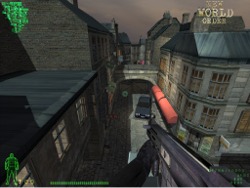
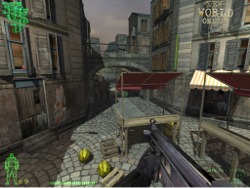
In multiplayer mode up to 64 players can play as either The Syndicate or the GAT on a LAN or via the internet. The game will support the community with a level-editor, allowing gamers to create their own mods and skins in G-Max.
Legion Ships
Strategy First and Paradox Entertainment have announced that their strategy game, Legion, has shipped and will be available in stores nationwide later this week. Legion, features both strategic and tactical elements. At the strategic level, you control vast armies and carve an Empire from the assortment of tribes and city-states that occupied Italy, France and Britain. At the tactical level, you must position your armies to take advantage of terrain and make use of the best formations in order to achieve victory.
Military News
Raytheon Wins US Navy ATFLIR Targeting Pod Contract
Raytheon was awarded a $78 million U.S. Navy contract for a second Low Rate Initial Production (LRIP) of the ASQ-228 Advanced Targeting Forward Looking Infrared (ATFLIR) pod, the latest generation in targeting technology. The company's Air Combat and Strike Systems business unit is responsible for ATFLIR. LRIP-2 represents the next major milestone in the ATFLIR program. Raytheon will deliver 28 pods for the F/A-18 E/F and two pod adapter units for the F/A-18 C/D. The U.S. Navy and Marine Corps are programmed to receive 574 pods with spares to equip their F/A-18 C/D and E/F aircraft.
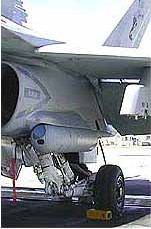
The first two production pods were delivered in April and May. The ASQ-228 ATFLIR airborne targeting pod is scheduled to achieve early operational capability with the Navy's first F/A-18E squadron later this year.
"ATFLIR will produce a revolutionary capability for F/A-18 Hornets and Super Hornets," said Wesley Motooka, senior director and general manager of Navy & Marine Corps programs at the business unit. "The ATFLIR will allow Navy and Marine Corps pilots to find, positively identify and destroy enemy targets from ranges and altitudes outside of harm's way."
The ATFLIR combines three pods into one: a targeting FLIR; a laser spot tracker; and a navigation FLIR.
During more than 550 developmental tests and operational test flights, eight test pods demonstrated geopoint accuracy, laser designation and long- range target recognition. Furthermore, lifecycle costs are two-thirds of the current systems, with a higher mean time between failure and decreased time to repair.
TRW gets ICBM Upgrade Contract
The US Air Force recently awarded ICBM prime contractor TRW a $65 million contract to upgrade the launch command centres that control the Minuteman III missiles. TRW will begin the system design and development phase of the ICBM Rapid Execution and Combat Targeting Service Life Extension Programme (REACT SLEP), initially worth $54 million.
The programme will upgrade command and control hardware, software, and support equipment, and replace ageing electronic assemblies in the Minuteman III launch control centres. These centres are located at the three Air Force wings that house the US' fleet of ICBMs (Malmstrom Air Force Base, Montana Minot Air Force Base, North Dakota F.E. Warren Air Force Base, Wyoming.
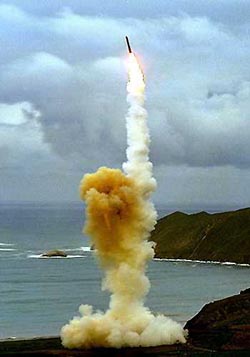
This programme, along with the March award of $170 million to TRW for the Safety Enhanced Reentry Vehicle (SERV) program, will provide the Air Force with the capability to deploy an improved re-entry vehicle on the Minuteman III missile. As a result of the Nuclear Posture Review (the report released in January that lays out the direction for American nuclear forces over the next ten years), the SERV programme will transfer Peacekeeper re-entry vehicles onto the Minuteman III to enhance the safety and maintain reliability of the re-entry vehicle.
Under contract to TRW, Lockheed Martin Missions Systems will provide upgraded operational software, hardware component designs, and support equipment. Boeing's BMC3 & Strategic Systems will provide engineering services for system testing and trainer integration.
Under its ICBM prime contract, TRW is also responsible for managing the Guidance Replacement Programme (GRP) -- together with its teammate The Boeing Company -- and the Propulsion Replacement Programme (PRP) -- with a joint- venture propulsion team of ATK Thiokol Propulsion, and Pratt & Whitney Space and Missile Propulsion. GRP and PRP went into full-rate production in December 1999 and October 2001, respectively, and are designed to extend the life of the Minuteman III guidance and propulsion systems to maintain alert readiness status beyond the year 2020. TRW's other ICBM responsibilities include the Propulsion System Rocket Engine Life Extension Programme, an effort that will refurbish the liquid propulsion stage (4th stage) of the Minuteman III missile to extend its life beyond 2020; and the Minuteman Minimum Essential Emergency Communication Network programme to upgrade launch control communication.
JSF Continues To Attract European Support
This week has seen several European nations agree to support the development of the Joint Strike Fighter (JSF), the next generation fighter being developed by Lockheed Martin in three versions for the US Navy, Air Force and Marine Corps and the Royal Navy and Royal Air Force.
The Netherlands, Italy and Norway have followed Denmark in agreeing to commit funds to the System Development and Demonstration (SDD) phase of the programme. All three consider that there will be considerable spin off of contracts and technology for theit defence and aerospace industries.
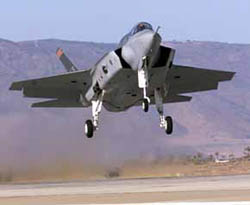
The Netherlands Lower House of parliament voted 99 to 51 to go ahead with the deal that will see the Hague contribute approximately Euro 850 million to the programme. The Dutch Government had decided to go ahead in February, but delayed the decision until after recent elections. Although the Netherlands does not intend to decide on its exact JSF buy yet, it does expect to see significant subcontractor work for its aerospace industry in the interim.
The Italian government has also decided to buy into the programme, committing $1 billion to the SDD phase. " Italy will be able to become part of a programme of enormous technological and industrial importance for our armed forces," Undersecretary of State Filipo Berselli declared. Italy is expected to order some 80 JSF in the 2015-20 timescale.
Norway plans to invest a little more than one million kroner (137.3 million euros, 126.3 million dollars) in development for the aircraft over the next ten years. However it has said that the competition to replace its F-16s remains open to Dassault Aviation's Rafale and the Typhoon being developed by European aerospace group EADS and BAE Systems of Britain as well as the JSF.
US forces may buy as many as 3,000 of the aircraft, which Lockheed says will provide the backbone of the world's multi-role fighter fleets for the next 30 to 40 years. US officials have projected a possible export market of another 3,000 aircraft.
As well as the US the JSF programme is supported by the UK, Canada and Turkey.
Second Successful Flight Test Of Improved P3I Bat
A U.S. Army and Northrop Grumman Corporation team conducted a successful flight test of the Pre-Planned Product Improved (P3I) Brilliant Anti-armor (BAT) submunition May 14 at White Sands Missile Range, N.M.
This marked a second consecutive success in a series of 12 drop tests planned this year as part of the P3I BAT's development phase. Launched from a Cessna aircraft, a recoverable version of the weapon (RBAT) flew over a formation of 16 remotely controlled, moving armored vehicles equipped with countermeasures.
The baseline BAT, currently in production at Northrop Grumman's Land Combat Systems facility in Huntsville, is an autonomous submunition that uses a combination of passive acoustic and infrared (IR) sensors to seek, identify and destroy moving armored targets deep in enemy territory.

The P3I BAT, a planned block upgrade, adds advanced millimeter-wave radar and improved imaging IR sensors, providing a co-boresighted, dual-mode RF/IR seeker that works with the baseline acoustic sensors. The new seeker expands BAT's engagement capability to include a wide range of both stationary and moving targets, particularly missile launchers. It also improves BAT's performance in adverse weather conditions and against sophisticated countermeasures.
"P3I BAT, delivered into a distant target area by missiles or UAVs, will improve substantially the Army's ability to strike discrete, high-value targets -- whether moving or stationary," said Dr. William H. Forster, vice president, Land Combat Systems, Northrop Grumman Electronic Systems sector. "These developmental tests allow us to improve, refine and mature P3I BAT's advanced sensors and algorithms, leading to a new generation of precision Army munitions." Visual observation and early quick-look analysis of the May 14 test data indicated that the RBAT executed the planned "indirect attack" maneuver properly, in spite of a mechanical failure in one of the target vehicles that opened a large gap in the formation. It detected targets acoustically and tracked a countermeasured target.
Following successful target acquisition, the secondary parachute was cut, and the IR seeker maintained line-of-sight track of the target until terminated by the recovery maneuver. The tracked target was equipped with the same countermeasures used last summer in tests of the baseline BAT, which was unable to "see through" the countermeasures.
[ Send Us News | Archives ]
by Gail Helmer
Thursday June 6, 2002
- Strategy First Snags Jagged Alliance
- New Screens: New World Order
- Legion Ships
- Raytheon Wins US Navy ATFLIR Targeting Pod Contract
- TRW gets ICBM Upgrade Contract
- JSF Continues To Attract European Support
- Second Successful Flight Test Of Improved P3I Bat
Strategy First Snags Jagged Alliance
As part of its restructuring plan, Sirtech Canada Limited has signed an agreement with Strategy First Inc. to manage all business matters connected with the Jagged Alliance series. The series consists of Jagged Alliance 1, Deadly Games, Jagged Alliance 2, and Jagged Alliance: Unfinished Business, released in 1995, 1996, 1998, and 2000 respectively. As part of the agreement with Sirtech, Strategy First will handle all sales, distribution, and end-user support of Jagged Alliance's back catalog.
The Jagged Alliance series has been a world-wide hit, and has had a tremendous following among end-users, said Robert Sirotek, Vice President of Sir Tech. We did not want to leave our loyal fans of the series without ongoing support, so we entered into a partnership with Strategy First to provide end-users with this service. Strategy First will provide us with access to distribution channels, and bring the series under one roof to permit better quality control and management of the franchise. It is always better that a franchise of this size and quality be managed from one source.
New Screens: New World Order
New World Order set for release in September 2002 is a single and multiplayer team based shooter developed in Sweden by Termite Games. The story takes place in the very near future. Gamers play a rookie member of the Global Assault Team, a commando squad created by international powers to take on a dangerous group of freelance terrorist factions better known as The Syndicate.


In multiplayer mode up to 64 players can play as either The Syndicate or the GAT on a LAN or via the internet. The game will support the community with a level-editor, allowing gamers to create their own mods and skins in G-Max.
Legion Ships
Strategy First and Paradox Entertainment have announced that their strategy game, Legion, has shipped and will be available in stores nationwide later this week. Legion, features both strategic and tactical elements. At the strategic level, you control vast armies and carve an Empire from the assortment of tribes and city-states that occupied Italy, France and Britain. At the tactical level, you must position your armies to take advantage of terrain and make use of the best formations in order to achieve victory.
Military News
Raytheon Wins US Navy ATFLIR Targeting Pod Contract
Raytheon was awarded a $78 million U.S. Navy contract for a second Low Rate Initial Production (LRIP) of the ASQ-228 Advanced Targeting Forward Looking Infrared (ATFLIR) pod, the latest generation in targeting technology. The company's Air Combat and Strike Systems business unit is responsible for ATFLIR. LRIP-2 represents the next major milestone in the ATFLIR program. Raytheon will deliver 28 pods for the F/A-18 E/F and two pod adapter units for the F/A-18 C/D. The U.S. Navy and Marine Corps are programmed to receive 574 pods with spares to equip their F/A-18 C/D and E/F aircraft.

The first two production pods were delivered in April and May. The ASQ-228 ATFLIR airborne targeting pod is scheduled to achieve early operational capability with the Navy's first F/A-18E squadron later this year.
"ATFLIR will produce a revolutionary capability for F/A-18 Hornets and Super Hornets," said Wesley Motooka, senior director and general manager of Navy & Marine Corps programs at the business unit. "The ATFLIR will allow Navy and Marine Corps pilots to find, positively identify and destroy enemy targets from ranges and altitudes outside of harm's way."
The ATFLIR combines three pods into one: a targeting FLIR; a laser spot tracker; and a navigation FLIR.
During more than 550 developmental tests and operational test flights, eight test pods demonstrated geopoint accuracy, laser designation and long- range target recognition. Furthermore, lifecycle costs are two-thirds of the current systems, with a higher mean time between failure and decreased time to repair.
TRW gets ICBM Upgrade Contract
The US Air Force recently awarded ICBM prime contractor TRW a $65 million contract to upgrade the launch command centres that control the Minuteman III missiles. TRW will begin the system design and development phase of the ICBM Rapid Execution and Combat Targeting Service Life Extension Programme (REACT SLEP), initially worth $54 million.
The programme will upgrade command and control hardware, software, and support equipment, and replace ageing electronic assemblies in the Minuteman III launch control centres. These centres are located at the three Air Force wings that house the US' fleet of ICBMs (Malmstrom Air Force Base, Montana Minot Air Force Base, North Dakota F.E. Warren Air Force Base, Wyoming.

This programme, along with the March award of $170 million to TRW for the Safety Enhanced Reentry Vehicle (SERV) program, will provide the Air Force with the capability to deploy an improved re-entry vehicle on the Minuteman III missile. As a result of the Nuclear Posture Review (the report released in January that lays out the direction for American nuclear forces over the next ten years), the SERV programme will transfer Peacekeeper re-entry vehicles onto the Minuteman III to enhance the safety and maintain reliability of the re-entry vehicle.
Under contract to TRW, Lockheed Martin Missions Systems will provide upgraded operational software, hardware component designs, and support equipment. Boeing's BMC3 & Strategic Systems will provide engineering services for system testing and trainer integration.
Under its ICBM prime contract, TRW is also responsible for managing the Guidance Replacement Programme (GRP) -- together with its teammate The Boeing Company -- and the Propulsion Replacement Programme (PRP) -- with a joint- venture propulsion team of ATK Thiokol Propulsion, and Pratt & Whitney Space and Missile Propulsion. GRP and PRP went into full-rate production in December 1999 and October 2001, respectively, and are designed to extend the life of the Minuteman III guidance and propulsion systems to maintain alert readiness status beyond the year 2020. TRW's other ICBM responsibilities include the Propulsion System Rocket Engine Life Extension Programme, an effort that will refurbish the liquid propulsion stage (4th stage) of the Minuteman III missile to extend its life beyond 2020; and the Minuteman Minimum Essential Emergency Communication Network programme to upgrade launch control communication.
JSF Continues To Attract European Support
This week has seen several European nations agree to support the development of the Joint Strike Fighter (JSF), the next generation fighter being developed by Lockheed Martin in three versions for the US Navy, Air Force and Marine Corps and the Royal Navy and Royal Air Force.
The Netherlands, Italy and Norway have followed Denmark in agreeing to commit funds to the System Development and Demonstration (SDD) phase of the programme. All three consider that there will be considerable spin off of contracts and technology for theit defence and aerospace industries.

The Netherlands Lower House of parliament voted 99 to 51 to go ahead with the deal that will see the Hague contribute approximately Euro 850 million to the programme. The Dutch Government had decided to go ahead in February, but delayed the decision until after recent elections. Although the Netherlands does not intend to decide on its exact JSF buy yet, it does expect to see significant subcontractor work for its aerospace industry in the interim.
The Italian government has also decided to buy into the programme, committing $1 billion to the SDD phase. " Italy will be able to become part of a programme of enormous technological and industrial importance for our armed forces," Undersecretary of State Filipo Berselli declared. Italy is expected to order some 80 JSF in the 2015-20 timescale.
Norway plans to invest a little more than one million kroner (137.3 million euros, 126.3 million dollars) in development for the aircraft over the next ten years. However it has said that the competition to replace its F-16s remains open to Dassault Aviation's Rafale and the Typhoon being developed by European aerospace group EADS and BAE Systems of Britain as well as the JSF.
US forces may buy as many as 3,000 of the aircraft, which Lockheed says will provide the backbone of the world's multi-role fighter fleets for the next 30 to 40 years. US officials have projected a possible export market of another 3,000 aircraft.
As well as the US the JSF programme is supported by the UK, Canada and Turkey.
Second Successful Flight Test Of Improved P3I Bat
A U.S. Army and Northrop Grumman Corporation team conducted a successful flight test of the Pre-Planned Product Improved (P3I) Brilliant Anti-armor (BAT) submunition May 14 at White Sands Missile Range, N.M.
This marked a second consecutive success in a series of 12 drop tests planned this year as part of the P3I BAT's development phase. Launched from a Cessna aircraft, a recoverable version of the weapon (RBAT) flew over a formation of 16 remotely controlled, moving armored vehicles equipped with countermeasures.
The baseline BAT, currently in production at Northrop Grumman's Land Combat Systems facility in Huntsville, is an autonomous submunition that uses a combination of passive acoustic and infrared (IR) sensors to seek, identify and destroy moving armored targets deep in enemy territory.

The P3I BAT, a planned block upgrade, adds advanced millimeter-wave radar and improved imaging IR sensors, providing a co-boresighted, dual-mode RF/IR seeker that works with the baseline acoustic sensors. The new seeker expands BAT's engagement capability to include a wide range of both stationary and moving targets, particularly missile launchers. It also improves BAT's performance in adverse weather conditions and against sophisticated countermeasures.
"P3I BAT, delivered into a distant target area by missiles or UAVs, will improve substantially the Army's ability to strike discrete, high-value targets -- whether moving or stationary," said Dr. William H. Forster, vice president, Land Combat Systems, Northrop Grumman Electronic Systems sector. "These developmental tests allow us to improve, refine and mature P3I BAT's advanced sensors and algorithms, leading to a new generation of precision Army munitions." Visual observation and early quick-look analysis of the May 14 test data indicated that the RBAT executed the planned "indirect attack" maneuver properly, in spite of a mechanical failure in one of the target vehicles that opened a large gap in the formation. It detected targets acoustically and tracked a countermeasured target.
Following successful target acquisition, the secondary parachute was cut, and the IR seeker maintained line-of-sight track of the target until terminated by the recovery maneuver. The tracked target was equipped with the same countermeasures used last summer in tests of the baseline BAT, which was unable to "see through" the countermeasures.
